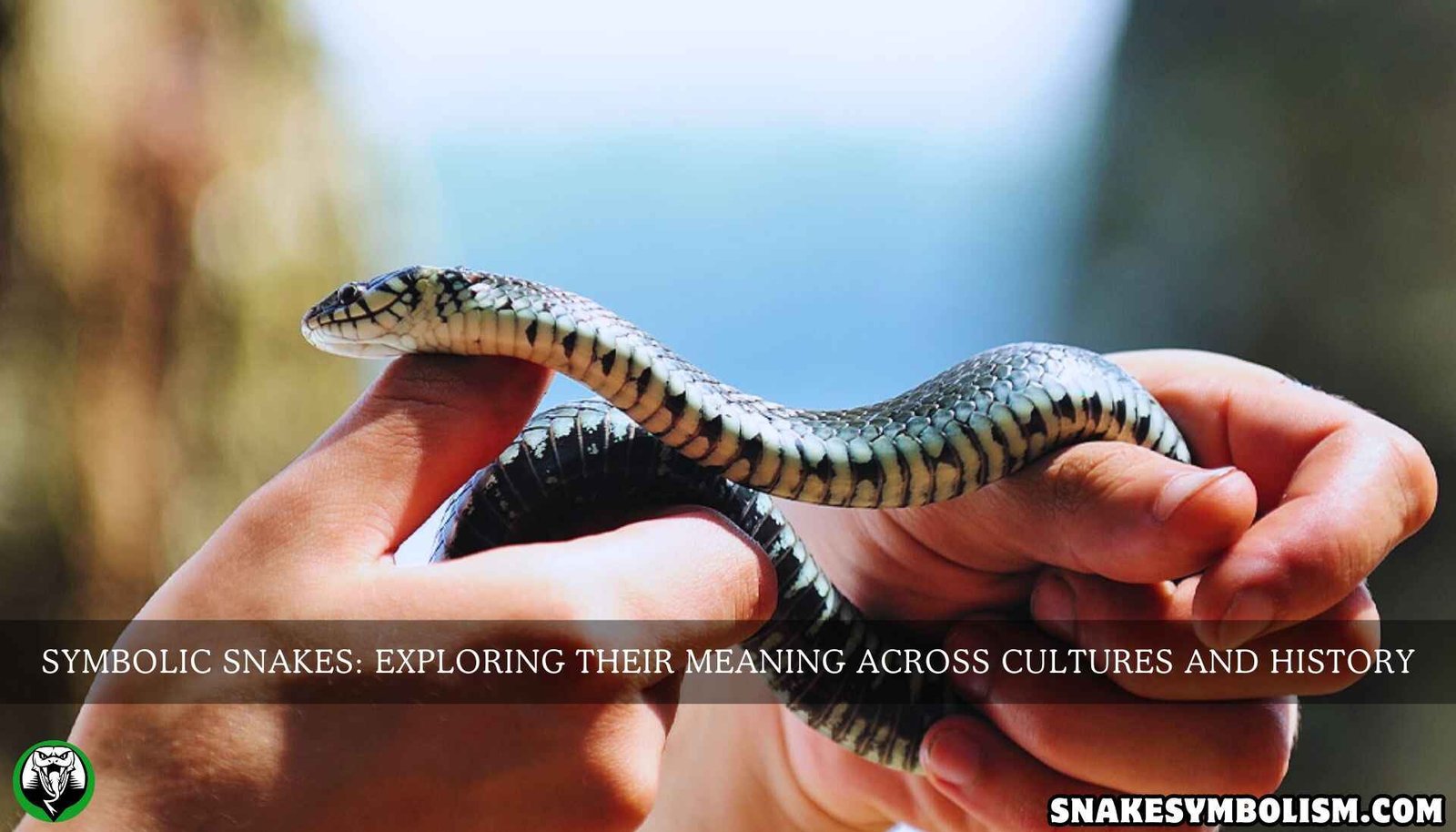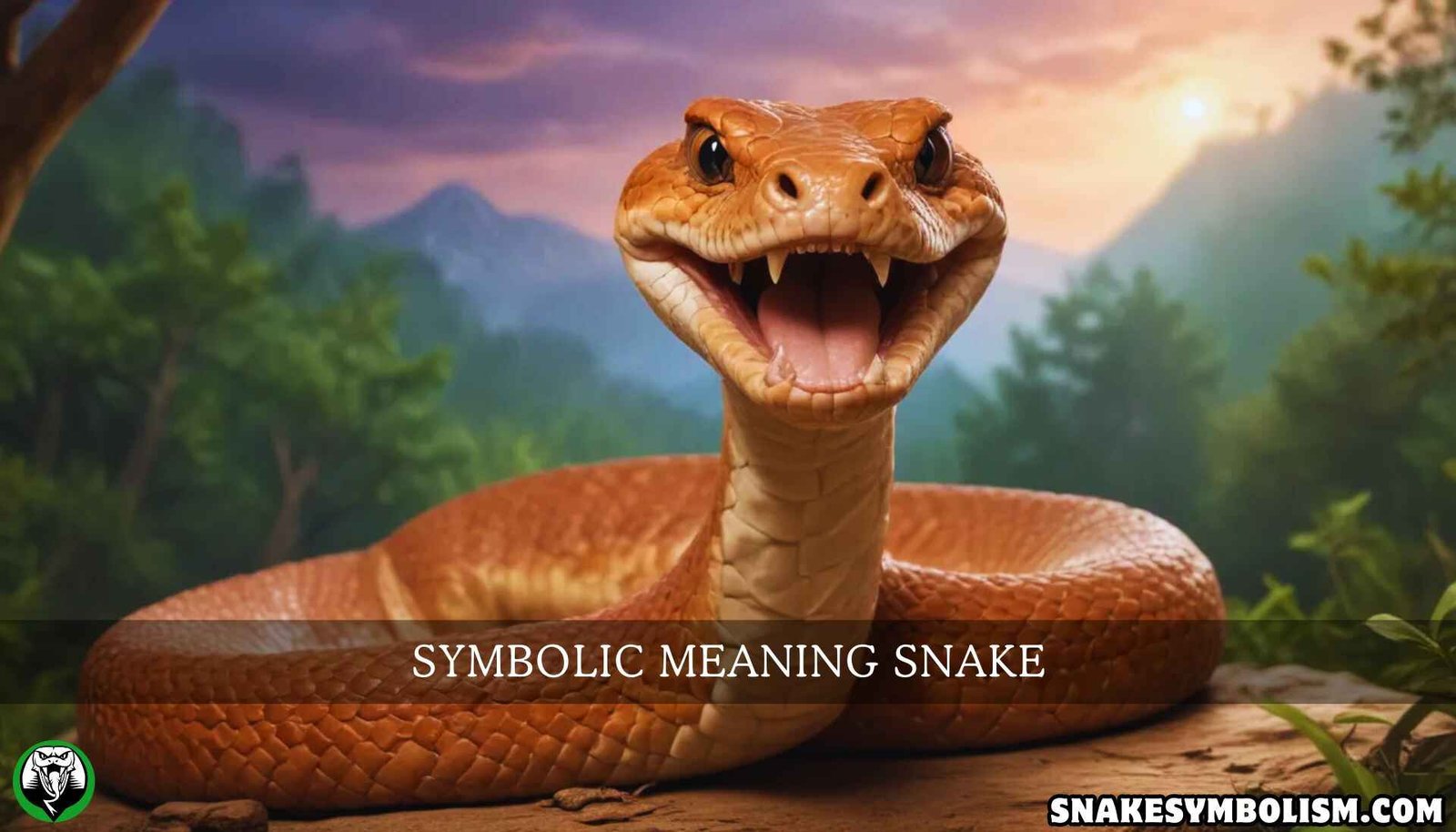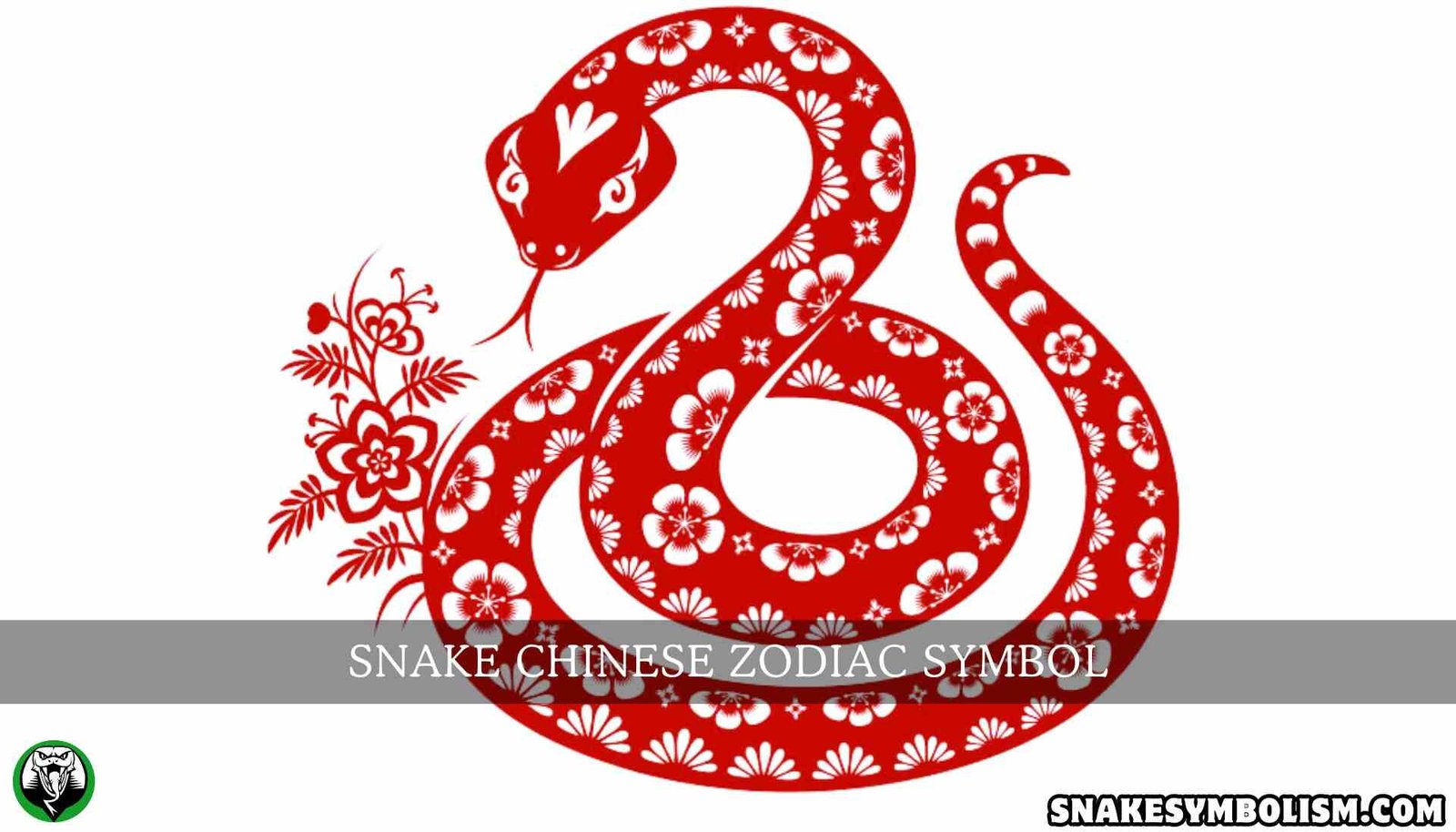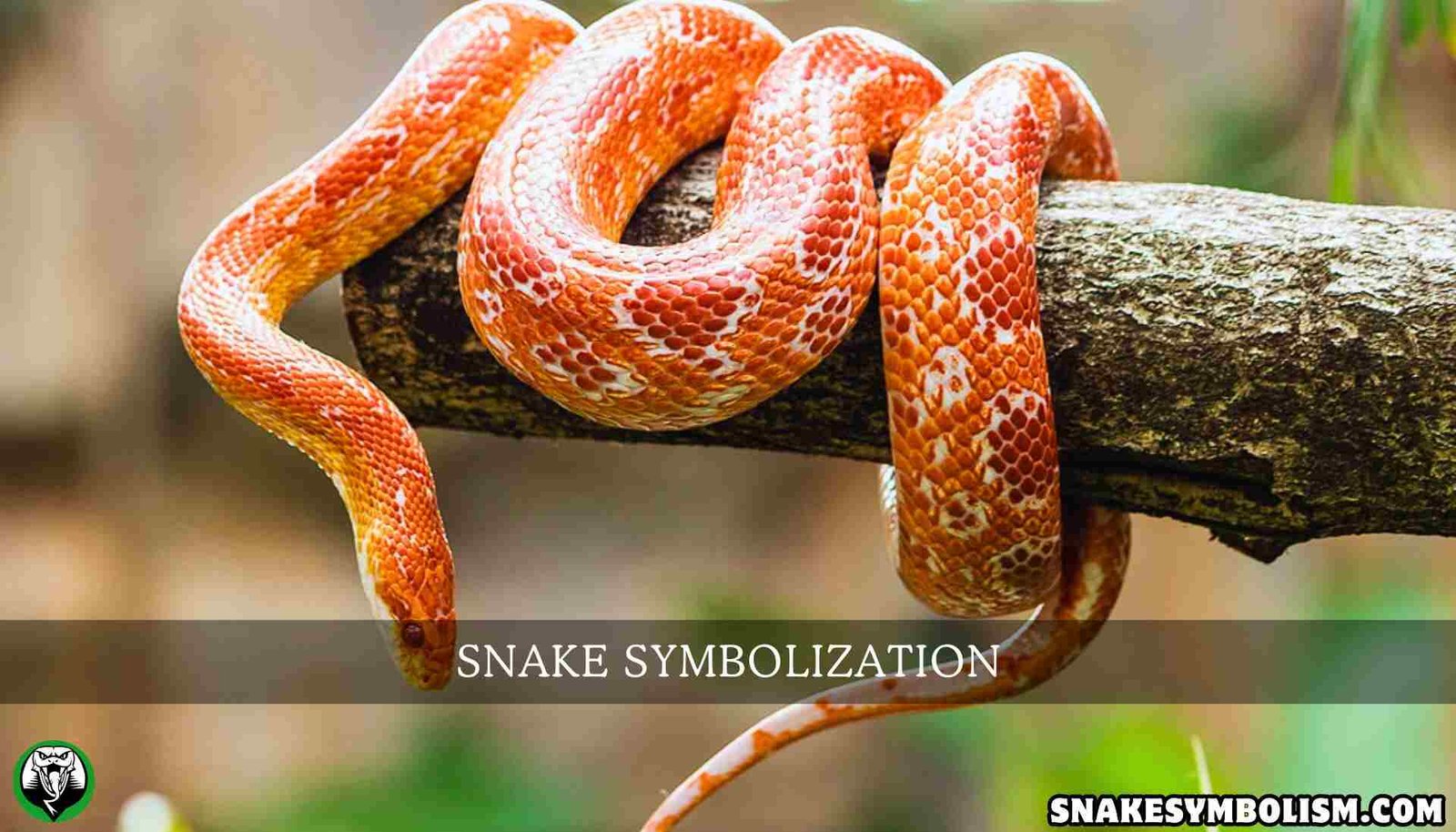Introduction
There is no reason to be surprised that Egyptian civilization abounds in myths and other symbols as the very people lead rich lives. In the hierarchy of the Egyptian gods, one of the most powerful is the goddess Isis – the goddess of magic, motherhood and healing, fertility, and protection. Several images of Isis have a goddess’ connection with snakes which have been emphasized as attributes. The focus of the study is on the Egyptian goddess Isis, dedicated to examining snake symbolism and pictures and ascertaining how these elements evolve and demonstrate the great importance of shelter, knowledge, and change.
Isis: The Divine Mother and Protector
Isis, or ‘Aset’, as she was called in ancient Egypt, has a special place in Egyptian history. Being the goddess of motherhood, magic, and protection made her a revered queen not only in Egypt but also throughout the Mediterranean world, adapting to many nations. He was the wife of Osiris, god of the underworld and mother of the fabled Falcon-headed god, Horus. Making sure that both the living and the dead were well cared for in Egyptian cosmology, Isis also became an important religious practice of the Egyptian people as she was invoked to medicine the ill, guard children as well as lead the deceased to the Netherworld.
Isis is often pictured with different symbols including the hieroglyph for a throne, which is again her name, ankh which means life. However, there is perhaps one symbol of Isis that is both fascinating and bewildering which is a snake. Snakes in the Egyptian cultural context bear more than a few meanings.
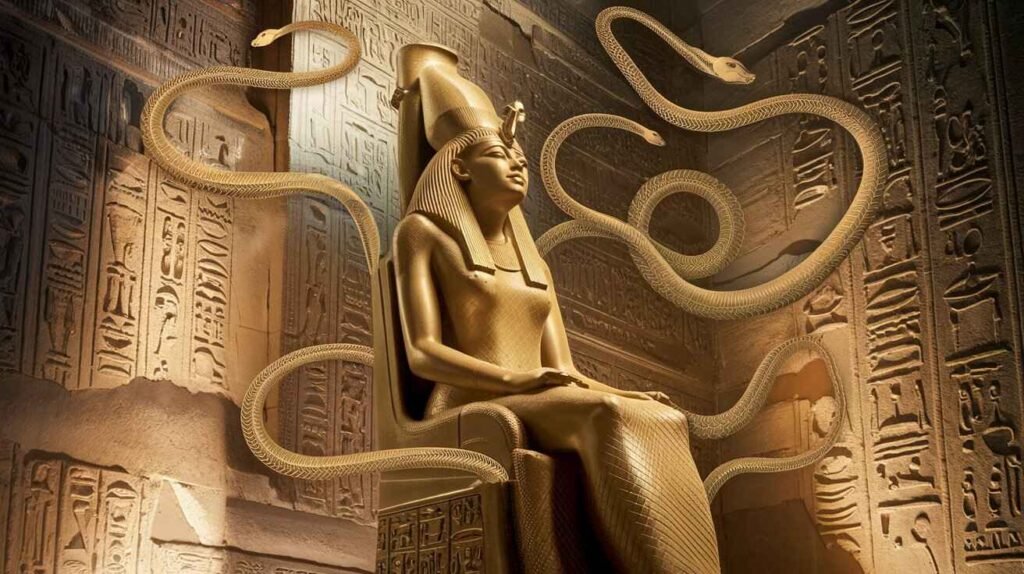
The Snake in Ancient Egyptian Religion
In ancient Egypt, snakes were both exalted and abhorred all at once. They were regarded as fierce animals, capable of both protection and aggression. The snake, or uroboros, commonly symbolized, royalty, gods, and dominion. It was common to see pharaohs inscribe snake emblems in their crowns to show that they were chosen by God and that they could protect their people from all evil.
The skin that snakes leave behind has been associated with a sense of death, rejuvenation, and transformation because they emerge with new skin. This enabled them to become symbols of eternity and revival, which were basic in the ideals of the Egyptian religion. In the cyclic Myth of Isis, snakes took a strong representation of her magic rather than healing, which was also above the forces of nature and the heavens.
Egyptian Isis and Snakes
The connection between Isis and the snakes has been incorporated into her mythology and religious practice in varying facets. Isis being the goddess of wonder and medicine, had the most snake goddess imageries or serpent companions by her. Images of this nature associate either her intelligence or her mastery over life and death to expand her onto both spheres.
- Isis In Her Role As a Guardian
The concept of Isis as “Aset One Who Protects” draws from her association with snakes in a more practical sense. Many representations show that there is a serpent about her or a crown of which this serpentine is a component thus portraying Isis as a protector not only of the living but the dead also. The snake in this case represents her powers where she ensures that there is no hostile force that can be a threat to the people she is protecting. For example, Isis employed the resources at her disposal including magic to defend her son Horus against all evil including the metallic-scaled beast Vasht Antu an Egyptian god associated with disorder and disorder.
The rearing cobra which is called the uraeus usually appears in the portrayals of Isis and other goddesses of war and protection. The cobra upon realizing danger, it is known to fight back and so this paid the cobra to be associated with a defense ready to attack the pharaohs with the gods. That is why Isis is associated with these snake images, she has the power to protect her people and King from dangers.
- The Serpent as a Symbol of Restoration and Rejuvenation
‘Healer’ is one of the attributes associated with Isis and her magic; snakes are also a symbol of regeneration. She was and is the goddess who resurrects Osiris, and she personified and embodied regeneration. Since snakes can slough off their old skin, they are also associated with the concept of rebirth. Therefore, they are appropriate in symbolizing the aspect of Isis who gives life to the dead.
Thus, snakes were representative of Isis the goddess of medicine who performed infections and other miracles. Whenever the situation demanded, Ancient Egyptians would call upon Isis as she could bring back the lost souls or heal the most grievous of wounds- a serpent does when it sheds its skin and renews itself.
- The Magical Skill and Wisdom
Usually, such women had children who were not the only children in their uterus, theirs had a child spirit that was Isis, a maternal who could also be a powerful sorcerer who understood everything that was in the universe. The snake is symbolic of knowledge and even magical knowledge. Thus, Isis is likened to the goddess of magic and not development and even children. In some images, Isis is depicted as holding a snake, demonstrating the power of magic and her knowledge of the natural and supernatural worlds.
For Isis, the goddess, there existed the famous myth where a snake plays a prominent role. This story tells us how she shaped a serpent of clay and saliva through magic to deceive the sun god Ra. Hijacking the snake’s venom, she was able to coerce Ra into disclosing his hidden name, thus becoming the goddess who overpowered the universe. This myth also illustrates her wit and strength, where the snake becomes a very important source of her magical skills.
Read Previous – Snake Symbolism
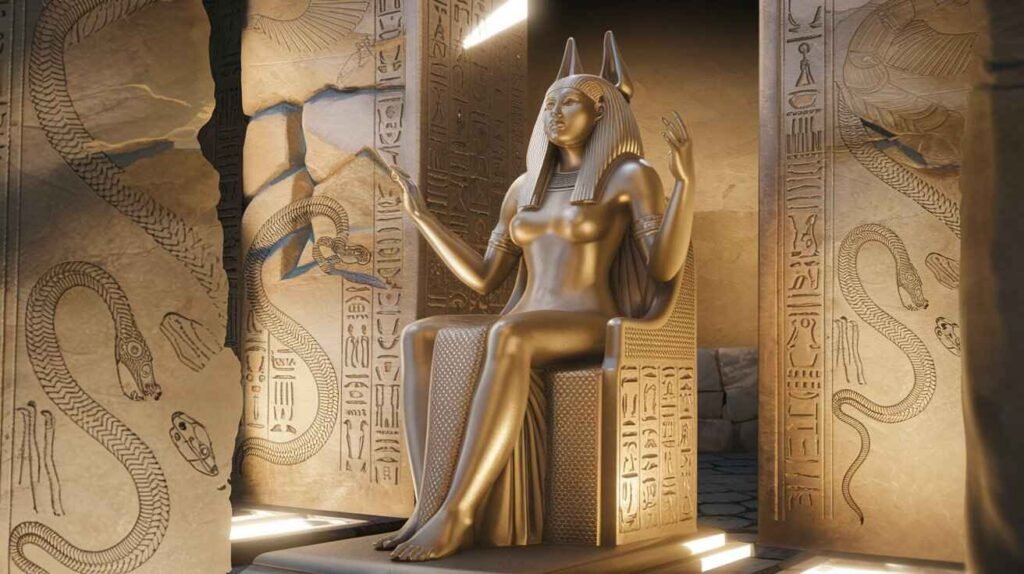
Snakes in Depictions of Isis: Understanding Their Role in Art
The Egyptian goddess Isis was on many occasions, depicted in ancient Egyptian art and her artifacts along with snakes. As in the case of hieroglyphics and sculptures, clay models of Isis displayed snakes as well as the Uraeus. Such portrayals of Isis are inclusive of her benign, far-sighted, or medicinal aspects and have often shown her performing magic to protect or heal someone.
- Isis and the Uraeus Crown
Among Isis’s most recurrent iconography, she is shown with a crown or headdress embellished with the uraeus cobra. The Egyptian royalty used to wear this symbol too as a protective device against enemies since it was believed the uraeus could spit venom-like fire at their foes. In the case of Isis, wearing the crown denotes her stewardship of the land of the living and dead and her power to shield her subjects from harm in whatever shape it may take.
- Isis and the Coiled Snake
In some images, a snake is depicted as curling around Isis’s figure. This symbolizes the nurturing aspect of Isis perhaps reflecting the inner secret – transformation and rebirth. Dressed or associated with the snake that can transverse to the earth and the underworld, Isis can advocate for the dead while still on earth, managing the boundary between the living and the dead.
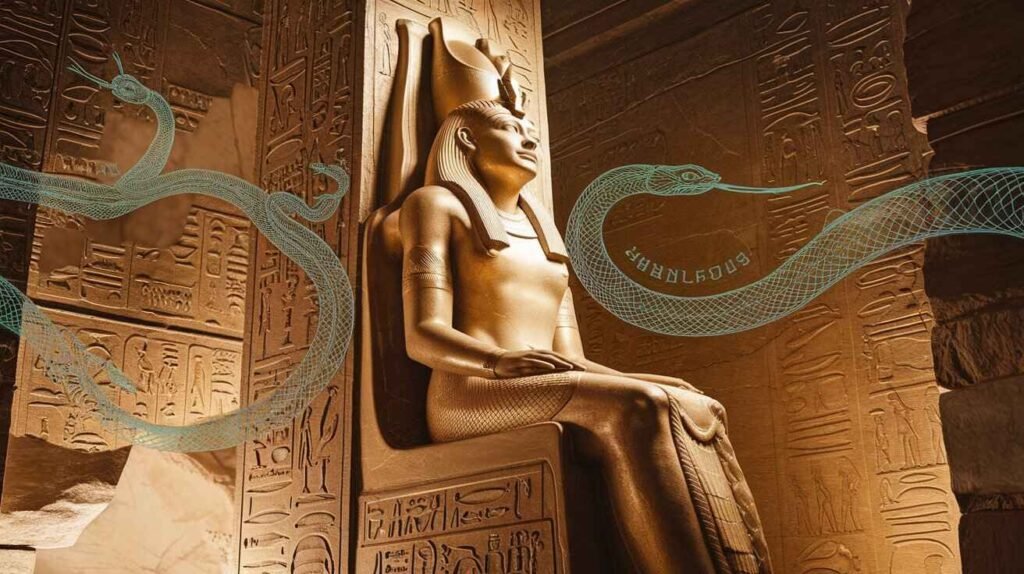
Conclusion: The Legacy of Isis and the Snake
One of the most salient figures in mythology is the Egyptian goddess Isis, known for her grandeur, wisdom, and traits that are protective. There is a certain topic on how Isis is related to snakes that deepens her mythology especially because these animals are indicative of protective forces, healing, rebirth, and magic. Isis is always associated with snakes in ancient Egypt. Whether wearing a serpent crown atop her head or having a coiling snake fetish resting on her feet, Isis carries all those good attributes that snakes stand for in the civilization of the ancient Egyptians.
At this moment, it is rather interesting to hear that a goddess, Isis, who holds the following Images with snake symbols offers further understanding of the myths associated with Egyptians. From here, she appears and functions well as a very strong and loving goddess who interacts with life, death, and magic like a skillful professional.
FAQs
Q: Who is the Egyptian goddess Isis?
A: In ancient Egyptian mythology, Isis is among the deities that were rated highly. She was associated with fertility, magic, healing, and motherhood, and was married to Osiris and gave birth to Horus.
Q: About what the snake represents, what does it acquire in Egyptian mythology?
A: The snake was associated with nobility, protection, knowledge, and transmutation in Egyptian mythology. It was also cognate with the idea of resurrection because the new skin represented new life that was given to the snake.
Q: In what way is the figure of Isis related to snakes?
A: There are cases when she is represented breastfeeding Horus, holding the head of a God, and snake emblems that denote her inbuilt force, defense, and concealment. She relates of snakes with knowledge and healing.
Q: Why do some people honor Isis in ancient Egypt?
A: She was worshipped as a saviour, nurturer and one who rules over the people. It was even reported that she has magical abilities to heal the ill, protect the dead and lead the living.
Q: What are the important symbols that come alongside Isis?
A: Besides the snake: more commonly known emblems along with Isis include the throne hieroglyph symbol (within her name), the life symbol known as ankh and the Tyet or often called the Knot of Isis is a further decoration meaning protection and fertility.
Stay connected and updated with – SnakeSymbolism!



